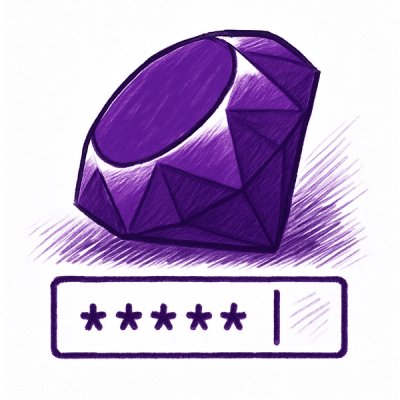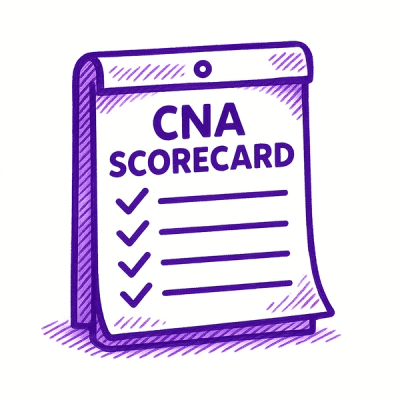
Security News
npm Adopts OIDC for Trusted Publishing in CI/CD Workflows
npm now supports Trusted Publishing with OIDC, enabling secure package publishing directly from CI/CD workflows without relying on long-lived tokens.
@sendbird/chat
Advanced tools
Supply Chain Security
Vulnerability
Quality
Maintenance
License
The Sendbird Chat SDK for JavaScript allows you to add real-time chat into your client app with minimal effort. Sendbird offers a feature rich, scalable, and proven chat solution depended on by companies like Reddit, Hinge, PubG and Paytm.
The Chat SDK provides the full functionality to provide a rich chat experience, implementing it begins by adding a user login, listing the available channels, selecting or creating an open channel or group channel, and receive messages and other events through channel event delegates and the ability to send a message. Once this basic functionality is in place, congratulations, you now have a chat app!
Once this is in place, take a look at all the other features that Sendbird supports and add what works best for your users.
Find out more about Sendbird Chat for JavaScript in the documentation. If you have any comments, questions or feature requests, let us know in the Sendbird community.
This section shows you the prerequisites you need to check for using Sendbird Chat SDK for JavaScript. If you have any comments or questions regarding bugs and feature requests, visit Sendbird community.
| Browser | Supported versions |
|---|---|
| Internet Explorer | Not supported |
| Edge | 13 or higher |
| Chrome | 16 or higher |
| Firefox | 11 or higher |
| Safari | 7 or higher |
| Opera | 12.1 or higher |
| iOS Safari | 7 or higher |
| Android Browser | 4.4 (Kitkat) or higher |
The quickest way to get started is by using one of the sample apps from the samples repo, create an application in the Sendbird dashboard and copy the App ID to the sample app and you’re ready to go.
Before installing Sendbird Chat SDK, you need to create a Sendbird application on the Sendbird Dashboard. You will need the App ID of your Sendbird application when initializing the Chat SDK.
Note: Each Sendbird application can be integrated with a single client app. Within the same application, users can communicate with each other across all platforms, whether they are on mobile devices or on the web.
You can install the Chat SDK with either npm or yarn.
npm
$ npm install @sendbird/chat
Note: To use npm to install the Chat SDK, Node.js must be first installed on your system.
yarn
$ yarn add @sendbird/chat
import SendbirdChat from "@sendbird/chat";
// your chat app implementation
If you are using TypeScript and have trouble importing Sendbird, please check your tsconfig.json file and change the value of allowSyntheticDefaultImports to true in compilerOptions.
Now that the Chat SDK has been imported, we're ready to start sending a message.
In order to use the features of the Chat SDK, you should initiate the SendbirdChatSDK instance through user authentication with Sendbird server. This instance communicates and interacts with the server based on an authenticated user account, and then the user’s client app can use the Chat SDK's features.
Here are the steps to sending your first message using Chat SDK:
Before authentication, you need to intialize the SDK by calling SendbirdChat.init.
The init method requires an appId, which is available from your Sendbird dashboard.
To improve performance, this SDK is modular. You must import and provide the required modules when calling init.
import SendbirdChat from "@sendbird/chat";
import { OpenChannelModule } from "@sendbird/chat/openChannel";
const sb = SendbirdChat.init({
appId: APP_ID,
modules: [new OpenChannelModule()],
});
Once the SDK is initialized, your client app can then connect to the Sendbird server. If you attempt to call a Sendbird SDK method without connecting, an ERR_CONNECTION_REQUIRED (800101) error would return.
Connect a user to Sendbird server either through a unique user ID or in combination with an access or session token. Sendbird prefers the latter method, as it ensures privacy with the user. The former is useful during the developmental phase or if your service doesn't require additional security.
Connect a user to Sendbird server using their unique user ID. By default, Sendbird server can authenticate a user by a unique user ID. Upon request for a connection, the server queries the database to check for a match. Any untaken user ID is automatically registered as a new user to the Sendbird system, while an existing ID is allowed to log indirectly. The ID must be unique within a Sendbird application, such as a hashed email address or phone number in your service.
This allows you to get up and running without having to go deep into the details of the token registration process, however make sure to enable enforcing tokens before launching as it is a security risk to launch without.
// The USER_ID below should be unique to your Sendbird application.
try {
const user = await sb.connect(USER_ID);
// The user is connected to Sendbird server.
} catch (err) {
// Handle error.
}
Sendbird prefers that users connect using an access or session token, as it ensures privacy and security for the users.
When Creating a user you can choose to generate a users access token or session token.
A comparison between an access tokens and session tokens can be found here.
Once a token is issued, a user is required to provide the issued token in the sb.connect() method which is used for logging in.
sb.connect() method.try {
const user = await sb.connect(USER_ID, ACCESS_TOKEN);
// The user is connected to Sendbird server.
} catch (err) {
// Handle error.
}
Create an open channel in the following way. Open channels are where all users in your Sendbird application can easily participate without an invitation.
try {
const params = new OpenChannelParams();
const channel = await sb.openChannel.createChannel(params);
// An open channel is successfully created.
// Channel data is return from a successful call to createChannel
...
} catch (err) {
// Handle error.
}
Enter the channel to send and receive messages.
await channel.enter();
// The current user successfully enters the open channel
// and can chat with other users in the channel.
...
Finally, send a message to the channel. There are three types: a user message, which is a plain text, a file message, which is a binary file, such as an image or PDF, and an admin message, which is a plain text sent through the dashboard or Chat Platform API.
const params = new UserMessageParams();
params.message = TEXT_MESSAGE;
channel.sendUserMessage(params)
.onFailed((err: Error, message: UserMessage) => {
// Handle error.
})
.onSucceeded((message: UserMessage) => {
// The message is successfully sent to the channel.
// The current user can receive messages from other users through the onMessageReceived() method of the channel event handler.
...
});
Sendbird wants customers to be confident that Chat SDK will be useful, work well, and fit within their needs. Thus, we have compiled a couple of optional guidelines. Take a few minutes to read and apply them at your convenience.
XSS (Cross-site scripting) is a type of computer security vulnerability. XSS helps attackers inject client-side scripts into web pages viewed by other users. Users can send any type of string data without restriction through Chat SDKs. Make sure that you check the safety of received data from other users before rendering it into your DOM.
Note: For more about the XSS prevention, visit the OWASP's XSS Prevention Cheat Sheet page.
If you are using the Immutable-js in your web app, instead of the Immutable.Map(), call the Immutable.fromJS() which converts deeply nested objects to an Immutable Map.
So you can call the functions of Sendbird objects because the fromJS() method returns internal objects. But if you use a Map function, you can't call any functions of a Sendbird object.
const userIds = ["John", "Harry"];
const channel = await sb.groupChannel.createChannelWithUserIds(
userIds,
false,
NAME,
COVER_URL,
DATA
);
const immutableObject = Immutable.fromJS(channel);
FAQs
Sendbird SDK for JavaScript
We found that @sendbird/chat demonstrated a healthy version release cadence and project activity because the last version was released less than a year ago. It has 1 open source maintainer collaborating on the project.
Did you know?

Socket for GitHub automatically highlights issues in each pull request and monitors the health of all your open source dependencies. Discover the contents of your packages and block harmful activity before you install or update your dependencies.

Security News
npm now supports Trusted Publishing with OIDC, enabling secure package publishing directly from CI/CD workflows without relying on long-lived tokens.

Research
/Security News
A RubyGems malware campaign used 60 malicious packages posing as automation tools to steal credentials from social media and marketing tool users.

Security News
The CNA Scorecard ranks CVE issuers by data completeness, revealing major gaps in patch info and software identifiers across thousands of vulnerabilities.